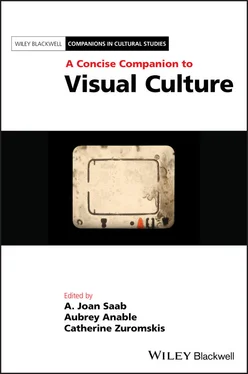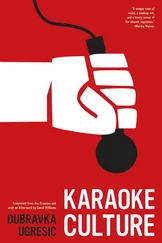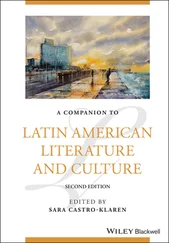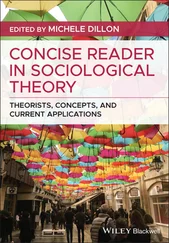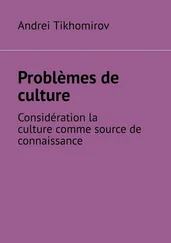Over the past thirty years, visual studies has matured and moved away from the margins. It is today an academic field established nationally and internationally, and is represented in the work of an increasingly diverse group of scholars with a broad range of social, cultural, and generational perspectives. This is in part due to a growing understanding, in a variety of disciplines (art history, literary studies, film and media studies, etc.), of the limitations of conventional cultural categories and traditional modes of disciplinary inquiry. Consequently, visual studies has intersected in vital ways with fields such as queer theory, critical race theory, disability studies, new materialism, and posthumanism. Yet the broader acceptance of visual culture as an intellectual project has also generated resistance within the academy. In 1996, the journal October published its now notorious “Visual Culture Questionnaire,” which was deeply critical of visual studies, suggesting that it was “helping, in its own modest, academic way, to produce subjects for the next stage of globalized capital” ( October 1996, 25). Relatedly, the very concept of interdisciplinarity has become fraught. While it offers sites of tremendous potential for exciting and transformative scholarship, it is also an all‐too‐convenient excuse for the neoliberal restructuring of university curricula without the infusion of new resources. Visual studies as a field is no exception. Some understandably wonder whether the institutionalization of the field has dulled its critical bite. As W. J. T. Mitchell argues in this volume, “I am all for visual culture studies serving as a source of ideas and tactics for the critical exposure of the spectacle. But I don’t see it as uniquely positioned as a form of political action—not any more than other disciplines of the social sciences and humanities.”
Also at issue are the limitations of vision as a framework for cultural inquiry. With the increasing ubiquity of images as a phenomenon of contemporary digital life, the sheer volume of visual culture in the present moment is so vast and its content so ephemeral and mutable as to almost defy comprehension. Visuality can seem at times too broad and overdetermined a concept through which to grasp the present. Some media scholars, for example, have rejected visual studies, arguing that computers are fundamentally non‐optical technologies and that attention to the visual distracts us from the “real” sources of power, which are in the opaque, or even invisible realms of code, or in datasets so vast that they exceed human perception (see for example the work of Alexander Galloway and Friedrich Kittler). Given these critiques and important insights, we might well ask: why visual studies now? What is the urgency of a visual culture reader in the present moment?
Our answer is this: given the challenges and complexities of these new realities, the intellectual and political project of visual studies is especially necessary. Many of the political goals that drove the study of visual culture remain unfulfilled. Even as scholars mark the end of postmodernism as a set of historical conditions, it is apparent that many of the issues that postmodern criticism found to be most urgent are still awaiting resolution. At the time of this writing, we are witnessing the resurgence of hypernationalist demagoguery on a global scale, a looming climate change disaster, the escalation of anti‐immigrant rhetoric, the revitalization of white power, increasing economic disparities in first‐world nations, the co‐opting of poststructuralism and postmodernism to promote “alternative facts,” and, most recently, the widespread effects of a global pandemic. We cannot begin to address these threats, much less combat them, without understanding how they operate through visual (and other) forms of culture.
Moreover, while the rapid proliferation of new kinds of digital platforms and technologies in recent years has made the study of visual culture more challenging than ever, we believe that turning away from visual analysis reinforces the problematic idea that digital media are distinct from other forms of human cultural production. By contrast, we believe that these contemporary conditions underscore the continuing relevance of the questions that have always animated visual studies: What is the relationship between seeing and knowing? How do looking and visibility structure power relations? The chapters in this volume bear out the ongoing urgency of these questions. And while visual culture, particularly in the present moment, works both for and against us, we cannot retreat from visuality just because it makes us vulnerable. To paraphrase the words of Douglas Crimp, visual culture continues to offer a site of possibility for getting the culture that we deserve, as scholars and, more broadly, as cultural consumers. It is the playing field, and it is crucial that we understand how it operates, for good and for ill.
****
This book is organized as a series of non‐traditional keyword essays (Part II) preceded by an introductory Part I, which we call “Scenes from the Institutionalization of the Field.” The preliminary material in Part I offers a brief history of the formation of visual studies; and it does so through a series of essays, interviews, and personal reflections from key figures in its foundation, dissemination, and critique. These “scenes” present various accounts of the influences, interests, and conflicts that determined the emergence and establishment of the field and shaped it over the past thirty years.
The keyword essays in Part II are grouped into five sections whose subject headings are “History,” “Ecologies,” “Mediations,” “Agencies,” and “Politics.” These subject headings and the keywords grouped under them as chapter titles are intended to be neither mutually exclusive nor comprehensive. Instead, these terms highlight the fertile and interrelating elements of visual culture scholarship in the present moment. The keywords are intentionally broad and, in choosing them, we sought to avoid jargon or particular scholarly trends. Rather than presenting traditional keyword essays that offer surveys of the existing literature or seek to conclusively define their terms, we invited contributors to approach their topics creatively, to propose their own takes, or to present case studies that connect a given keyword to their own scholarly interests. Ultimately, we hope that these essays will produce a dialogue between ideas and areas of inquiry that will enrich and expand our understanding of visual culture and its operations, from its historical origins to its present manifestations and its possible futures.
1 Bryson, Norman, Michael Ann Holly, and Keith Moxey, eds. 1994. Visual Culture: Images and Interpretation. Hanover, NH: University Press of New England.
2 Dikovitskaya, Margaret. 2005. Visual Culture: The Study of the Visual after the Cultural Turn. Cambridge, MA: MIT Press.
3 The Editors. 1996. “Visual Culture Questionnaire.” October 77: 25–70.
4 Evans, Jessica and Stuart Hall. 1999. Visual Culture: The Reader. London: Sage Publications in association with the Open University.
5 Mirzoeff, Nicholas, ed. 1998. The Visual Culture Reader. London: Routledge.
6 Sturken, Marita and Lisa Cartwright. 2001. Practices of Looking: An Introduction to Visual Culture. Oxford: Oxford University Press.
PART I Scenes from the Institutionalization of the Field
Chapter 1 Practices of Visual Culture Pedagogy
Lisa Cartwright and Marita Sturken
In this chapter we approach visual culture pedagogy through an account of our academic training and work histories as they informed our book Practices of Looking: An Introduction to Visual Culture in its three very different editions (2001, 2008, 2018). Our experience was unusually broad, spanning art and media practice, cultural studies, critical theory, cultural history, and media activism. Through this mixed approach we helped to introduce a range of images and image‐making cultures and technologies, beyond art and film, to the then nascent visual culture field. In the account we give here of that process we aim to show how, in the 1990s, visual culture was not just a new direction in art history or a merger between art history and film studies. Rather the field’s emergence was also motivated by political movements and their multimodal forms of practice, as well as by a commitment to recognizing and studying images and imaging technologies at work in a host of institutions and practices beyond fine art, popular media, and art cinema during a period of extraordinary technological transformation around the visual.
Читать дальше
